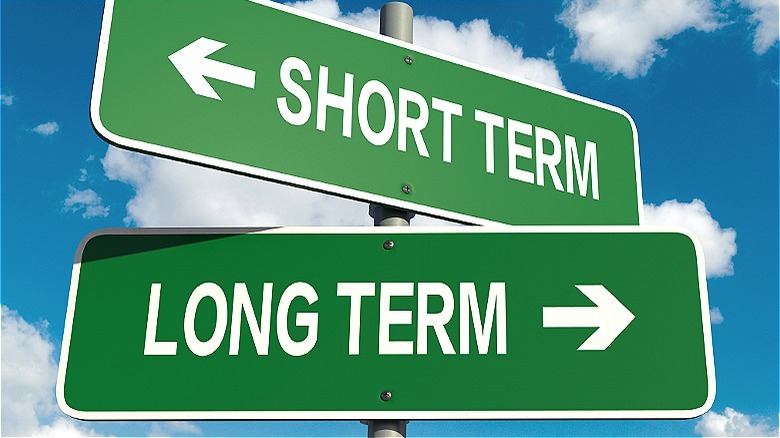Can You Still Make Trades After The Market Closes?
Whether you're a newbie investor or a seasoned veteran, most stock traders know that the major markets like the New York Stock Exchange and the Nasdaq are open for business between the hours of 9:30 a.m. and 4:00 p.m. Eastern time, Monday through Friday, except for certain holidays. Some holidays dictate a complete closure of trading for the entire day; while others, like Christmas Eve, have an early closing time of 1:00 p.m. Eastern.
However, did you know the stock market continues to trade for an additional four hours after the traditional closing time of 4:00 p.m. Eastern? It's true. Although all of the human brokers, dealers, and other market makers leave for the day, trading is carried out by what's known as electronic communications networks, or ECNs, from 4:00 p.m. until 8:00 p.m. Eastern.
Rather than going through an intermediary, ECNs pair up buyers and sellers directly. This type of after-hours trading was once only available to large institutional firms, but nowadays, several online brokers, as well as investment apps, permit such stock market activity, albeit with rules that may vary from normal trading. This said, just because extended-hours trading is now available to the masses, does that necessarily mean you should participate? Well, it depends.
Advantages of trading after hours
If there's one overriding reason to want to trade after hours, it's to get ahead of the market's reaction to any company news that might break after the regular market closes. For example, during earnings season, a company might release a stellar earnings report that's expected to result in a serious pop in share price when regular trading resumes the next business day. By purchasing shares quickly after the earnings are reported after hours, you may be able to obtain shares of stock before the earnings beat is fully priced in.
Conversely, if a company reports disappointing quarterly earnings, you can sell shares you already own before the market opens up the next business day, when prices may be significantly lower. In a slightly more complex scenario, some seasoned investors might witness a stock irrationally plunge after hours, creating a buying opportunity. By morning, calmer heads could prevail, erasing some of the overnight losses and resulting in a quick gain for anyone who bought shares during the after-hours panic.
Finally, if an investor needs access to the proceeds from selling a stock sooner rather than later, selling shares in the after-hours market will start the settlement clock ticking. Nowadays, most stock settle on a T+2 basis. That is, sellers will receive the cash from their stock sale two business days after the sell order is filled. For example, if you sell a share of stock on Wednesday, the cash from that sale will be available on Friday.
Risks exist in after-hours trading
Getting a 12-plus hour jump on the general public before the opening bell is rung at the New York Stock Exchange might sound too good to be true, but at the same time, there are a few drawbacks to be aware of. The first pitfall is a lower level of liquidity in after-hours trading. That means, unlike during the day on a busy trading floor, after-hours may only have a handful of market participants to trade with. That means that orders can take longer to fill (or sometimes go unfilled altogether) and the spread in price between buying and selling may be wider than during the regular trading day.
Finally, there frequently are changes in sentiment overnight. For example, what might be initially considered good news for a company might later be more closely scrutinized and determined to be not as positive as originally thought — or vice versa. As well, an earnings report can even contain unintentional mistakes that create a false direction for the company's stock initially.
This was the case with ride-hailing company Lyft (NASDAQ: LYFT) in February 2024, when an extra zero was accidentally added to Lyft's margin expansion figure. Investors were initially led to believe margins were to expand at 5%, rather than the actual projected rate of 0.5%. Shares of Lyft immediately soared in price about 60%, only to give back approximately half that gain when the earnings report error was caught and corrected.
You can trade early in the morning, too
Although this article has focused on trading that occurs after the market closes, be aware that pre-market trading exists as well. Like the name implies, pre-market trading is available from 4:00 a.m. to 9:30 a.m. Eastern time and utilizes the same electronic communications networks as evening trading does to match up interested buyers and sellers. The whole of pre-market and after-hours trading combined comprises what's called extended-hours trading.
For investors with longer-term financial goals, such as building wealth for retirement, it's probably not a good idea to get involved with trading outside of regular market hours. Because of the reduced number of market participants in extended-hours trading, price movements can be more exaggerated than those that happen during regular trading hours from 9:30 a.m. to 4 p.m. Eastern. Further, initial moves in stock price can sometimes be irrational and counterintuitive, only to reverse course when regular trading resumes.
In summary, extended-hours trading offers increased flexibility and the ability to trade for 16 hours each day, rather than the standard 7.5 hours. However, such activity is best left to experienced traders who are comfortable with the increased risk and volatility involved, not casual long-term investors or, say, anyone investing in stocks as a beginner.



